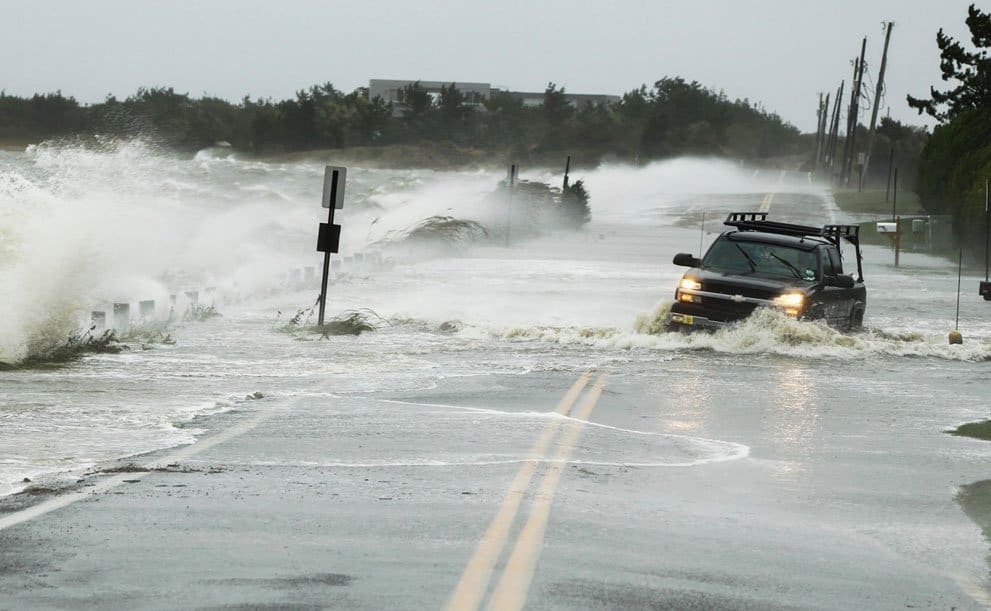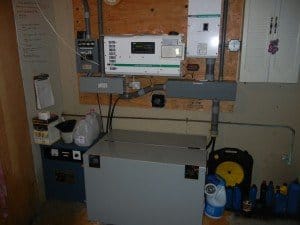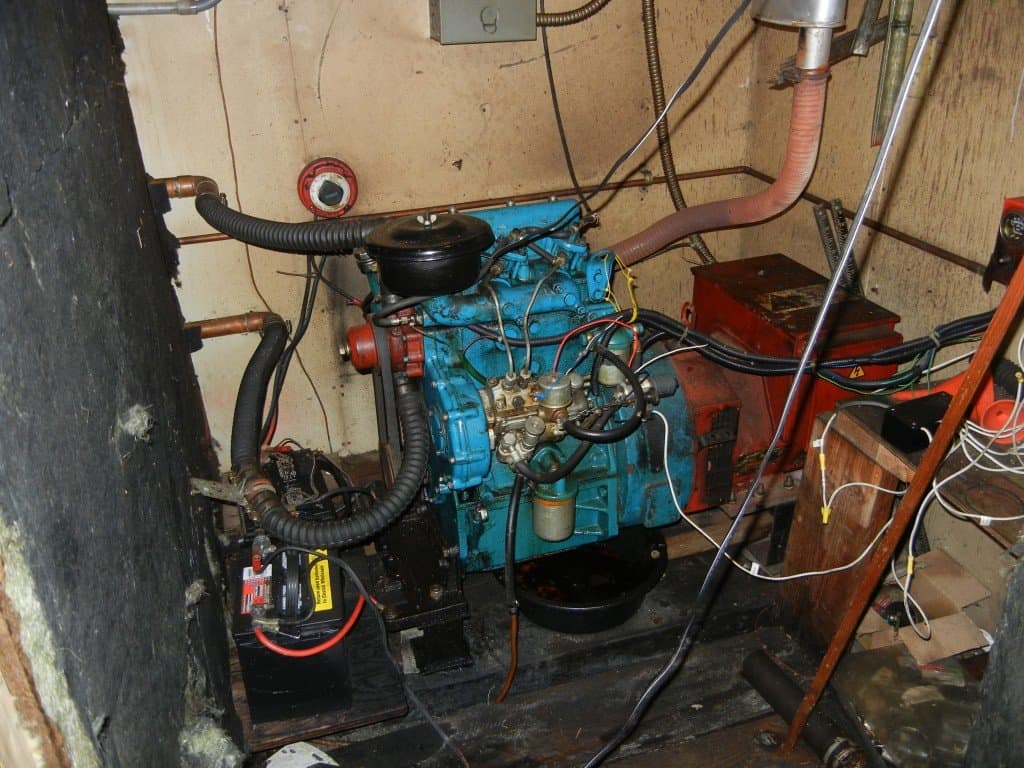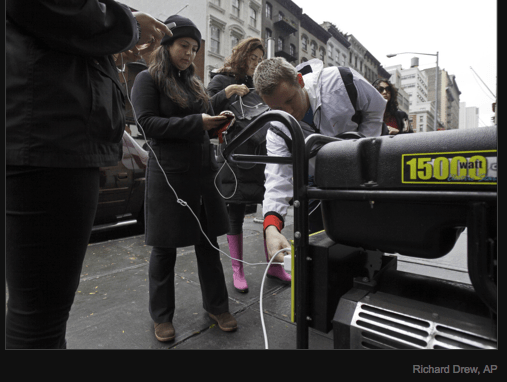Hurricane Sandy’s Message: Get Prepared!

It’s not over yet, but the “Monster Storm”, Hurricane Sandy, has already left millions without power, which suggests that it’s kinda a good idea to get prepared for calamity. Here are some suggestions. (How ‘bout a portable generator?)
 RIGHT NOW I’m visiting my mother in Washington State, and we’ve been pretty much riveted to CNN’s coverage of Hurricane Sandy, the so-called “Monster Storm”. Of course we’re not affected, but if it happened here, we’d be prepared, which you’ll see below.
RIGHT NOW I’m visiting my mother in Washington State, and we’ve been pretty much riveted to CNN’s coverage of Hurricane Sandy, the so-called “Monster Storm”. Of course we’re not affected, but if it happened here, we’d be prepared, which you’ll see below.
This afternoon, CNN reported that 33 62 88 over 100 (as of 11/2) people died and hundreds of homes were destroyed. As sorrowful as those numbers are, the startling number is 8,000,000 – the number of people expected to be without power for some unforeseeable period of time.
Consistent readers of this blog know that from time to time I write about the wisdom to get prepared for calamity. It’s clear to me that given the potential for economic and natural disasters, we should spend a little of our energy and money now on preparation rather than a lot of energy and money – if even possible – once we’re in the thick of things; unhappy things, like Sandy or Irene or Katrina.
Or the Fukushima Daiichi nuclear disaster.
It was the disastrous Fukushima nuclear disaster caused by a tsunami caused by an earthquake that instigated my writing several posts about how we’re so vulnerable to natural disasters, and what can be done to prepare for them.
Much of what I wrote was distilled down to the post called, How to Survive the Scary Future: A Rich List of Resources , where the byline is:
“Be Prepared to Be Surprised”
And so here we are again with Sandy, and here we will inevitably be again in some unknowable, but certain future.
8,000,000 homes without power. Think about what a back-up generator could do for those homeowners.
Back-up Generators
The point of a back-up generator is to be able to produce electricity should your power connection to the grid get disrupted, as it is now for millions of people and property that were in the way of Sandy.
You have basically two choices:
- A portable back-up generator, or
- A stationary generator.
Portable Generators are small and mid-sized (3,000 – 8,500 watts), costing around $400 to $3,500.
Pros: Easy to use, store and adequate to plug-in ordinary appliances.
Cons: Insufficient power for heavy electrical demand items like central air conditioning, and requires big quantities of gasoline storage.
Stationary Generators are permanently mounted (basically unmovable), integrated into the household electrical system, and can be big enough (5,000 – 15,000 watts) to operate the house. Costs are about $5,000 to $10,000.
Pros: They can be run on a continuous supply of fuel, either propane or natural gas, and are big enough to power the entire house. Given that they’re integrated into the electrical system, there are no wires to mess with, or the need to plug in individual appliances into the generator.
Cons: Big bucks, and they require professional installation.
My Generator
Although I’m by no means an authority on generators, I’ve gone through the process of selecting and installing a stationary generator on my family’s property in Washington State. 
Nearly two decades ago, we cleared a space in five acres of woods and built four housing units for family members. At that time, we were far enough from the grid that we decided to become electrically self-sufficient.
So, we put some solar panels on the roof, got a battery bank, inverter and a diesel-powered generator – all housed in what we refer to as the “Utility Shed”.
 The battery bank holds 1,680 amp hours of electricity and the diesel is 12,000 watts. Yes, it’s a monster. You may not need a monster. What you ought to do is check out Consumer Reports generator buying guide to assess what you do need.
The battery bank holds 1,680 amp hours of electricity and the diesel is 12,000 watts. Yes, it’s a monster. You may not need a monster. What you ought to do is check out Consumer Reports generator buying guide to assess what you do need.
If then you decide that a portable generator is right for you, consider the ones I present below after the gritty pic of my old, tried-and-true, basic, diesel-sipping China Diesel.
Two Portable Generators To Consider
This is a Yamaha 4,500 Watt, 4-Stroke, Gas Powered Portable Inverter Generator With Electric Start. 
Yamaha portable generators are among the highest rated because they’re easy to work, sip fuel, are durable, quiet and reliable.
At 4,500 watts, this portable can power most people’s needs on a temporary basis, but given its power and quality, it is expensive, around $3,000.
If you want less power, you can pay less too, but I suggest that you stick with either a Yamaha or Honda, unless you’re willing to do the necessary research to find a less known, but quality alternative.
This 4,500 Watt Yamaha is highly rated and flexible, as one customer review demonstrates as it details how it was connected to the owner’s house electric panel:
“I installed a Reliance 10 circuit manual transfer panel with exterior power inlet box that I use to connect the Yamaha to my house electric panel. Works like a charm and is pretty darned quiet for a generator which is what I needed in my townhouse situation. I sent the carburetor to US Carburetion for a tri-fuel conversion and teed off the existing exterior natural gas line for my BBQ grill to run to the generator. No trips to the gas station during outages and a theoretically unlimited supply. Very happy with my setup.”
If you need less power and/or need to spend less money, Yamaha may still serve you well. The Yamaha 2,000 Watt, 4-Stroke Gas Powered Portable Inverter Generator will set you back about $1,000:
There are many generators at Amazon.com to choose from, and perhaps reading reviews there can help you determine what size and set of features you may need.
Here’s a link to multiple pages of options: Generators Sold by Amazon.com (Affiliate link.)
The Minimalist Approach
For those of you who will never buy a generator (“candles and tuna will do, thanks anyway”), you may still wish to power your cell phones, and listen to emergency radio.
Here’s a recent picture of those who had to use a government provided cell phone power up station during the Sandy Hurricane:
Here’s what you can do instead:
Yes, crank the thing and get it juiced up sufficient to play a radio, power a flashlight, or recharge your cell phone – all for about $129.
Conclusion
The bottom line is that someday, somewhere, something’s going to happen to you for which you wish you were prepared. There’s no better time than now to get prepared.
I’m not an advocate of living fearfully, or trying to take all the risk out of life, but some things are worth doing: Extra food and water in the pantry, some stored gas, flashlights, and a back-up power source are some of the basics.
Want some inspiration? There’s a long list of what others are doing to prepare themselves for calamity at the bottom of this post… just in case.
Do it with a light heart.
Yep.
Last Updated on July 7, 2023 by Joe Garma







